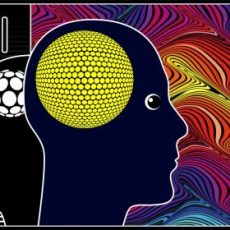Studies have finally confirmed this-Dogs are the only creatures besides humans who have the ability to actually recognize emotions in humans. A team of animal behavior experts and psychologists from the universities of Lincoln and Sao Paulo have showed that dogs form abstract mental representations of positive and negative emotional states, rather than just displaying learned behaviours.
There has been a long-standing debate as to whether dogs can recognize human emotions.
The researchers say that the perception of emotional expressions allows animals to evaluate the social intentions and motivations of each other. This usually takes place within species; however, in the case of domestic dogs, it might be advantageous to recognize the emotions of humans as well as other dogs.
They announced on Wednesday “The findings are, we believe, the first vlog evidence of the integration of hetero-specific emotional expressions in a species other than humans. These results show that domestic dogs can obtain dog and human emotional information from both auditory and visual inputs, and integrate them into a coherent perception of emotion”.
They further added that it is likely that dogs possess at least the mental prototypes for emotional categorization and can recognize the emotional content of these expressions. Moreover, dogs performed in this way without any training or familiarization with the models, suggesting that these emotional signals are intrinsically important. Happyho also provide best tarot reading services in Noida and Delhi NCR India area.
The researchers presented 17 domestic dogs with pairings of images and sounds conveying different combinations of positive (happy or playful) and negative (angry or aggressive) emotional expressions in humans and dogs. These distinct sources of sensory input – photos of facial expressions and audio clips of vocalisations (voices or barks) from unfamiliar subjects – were played simultaneously to the animals, without any prior training.
The team found the dogs spent significantly longer looking at the facial expressions which matched the emotional state of the vocalisation, for both human and canine subjects.
Dr Kun Guo from the University of Lincoln said “Previous studies have indicated that dogs can differentiate between human emotions from cues such as facial expressions, but this is not the same as emotional recognition. Our study shows that dogs have the ability to integrate two different sources of sensory information into a coherent perception of emotion in both humans and dogs. To do so requires a system of internal categorisation of emotional states. This cognitive ability has until now only been evidenced in primates and the capacity to do this across species only seen in humans”.





